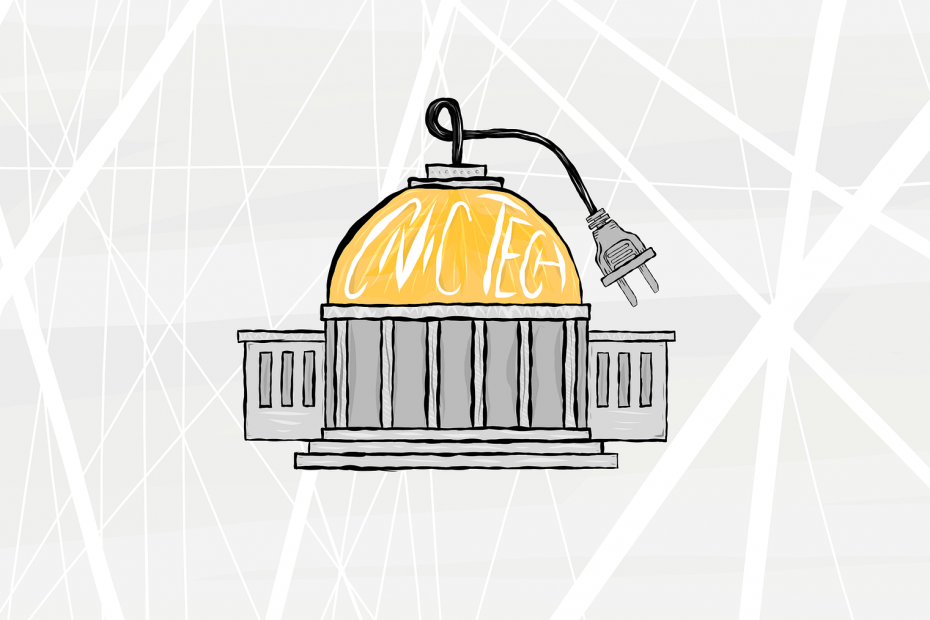Given the high US federal government budgetary allocations to the IT sector, it promises to be a lucrative field that contractors cannot afford to overlook. For the fiscal year 2021, the US federal government has allotted USD 92.17 billion for federal IT spending.
These massive budgetary allocations imply massive Information Technology contracts and hence more opportunities for IT service and goods providers.
US Govt’s Focus on Spending Towards Information Technology
With the need for digital equity, institutional agility, ethics, and privacy on the rise, implementing a digital government strategy has become essential for the federal CIOs.
Technological development has been a priority for government CIOs for decades, something which has gained substantial priority due to the pandemic.
- Citizen Digital Identity

The Real ID Act of 2005 aimed to address identification issues for Americans by ensuring easy access to physical identification documents. But even before the issuance of physical identification is fully streamlined under the Real ID Act, the focus seems to be shifting to a digital identity as the world becomes more digitized. This fact has propelled the need for a citizen digital identity to the limelight in recent years.
Digital identity refers to providing a citizen’s identity via a government digital channel. While this change is essential for seamless access to government services, the governments have been slow to adopt it.
At least 99 million Americans do not have any form of identification that complies with the Real ID Act. An even larger population of Americans does not have any form of formal digital identity. Hence, in the near future, the federal and state governments will demand solutions that can help them meet the citizen digital identity goals.
- Multichannel Citizen Engagement

Along with digital identity, multichannel citizen engagement emerged as another major trend in 2019-20. Multichannel citizen engagement is becoming necessary given that citizens expect to interact with the government and its agencies using various ways. To ensure this, government CIOs will have to use technologies that provide a holistic approach to citizen engagement.
As the implementation of multichannel citizen engagement across different government sectors continues, it is now possible to use data to capture citizens’ desires and needs. Also, in the future, citizens will have more freedom to engage the government on their own terms.
- Adaptive Security

Security issues pose a challenge for federal digitization as Cyberattacks on government assets aren’t new. Ransomware attacks in Baltimore, MD, and attacks on government infrastructure assets in Australia and Ukraine have raised security concerns.
An adaptive security approach helps resolve this hurdle by anticipating and mitigating evolving cybersecurity threats. Adaptive security has been a major area of IT investment by federal CIOs.
- Anything as a Service (XaaS)
The pandemic has resulted in a need for digital service delivery on a large scale, pressurizing the government to modernize its legacy infrastructure. XaaS is a cloud-based sourcing strategy that enables government CIOs to acquire and manage operations.
With XaaS, government CIOs can reduce costs significantly and also simplify IT deployments. Hence, with XaaS, there will be fewer servers, network deployments, and other things like hard drives required, which all translates to less physical overhead.
At least 95% of government IT investments by 2025 are expected to be made as a service solution. Hence, there will be a reduction in demand for physical IT infrastructure as government institutions seek more cloud-based solutions.
- Case Management as a Service (CMaaS)
Casework comprises the majority of government processes, and many government departments implement legacy case management point solutions. CMaaS has emerged as a new approach to casework. It replaces legacy case management systems with modular solutions that are easy to assemble, disassemble and recompose as per changing requirements.
Government CIOs readily implement CMaaS solutions to build composable business practices and achieve institutional agility. By adopting these solutions, the CIOs can implement new features much faster than organizations that do not use CMaaS. All this translates to increased overall performance and efficiency.
- Accelerated Legacy Modernization

Government departments have for long relied on legacy systems to digitize their operations. Government CIOs are realizing the limitations of legacy infrastructure and are accelerating the move to legacy modernization.
Half of the government agencies are expected to have modernized core legacy applications by 2025. These agencies are looking to adopt more modern technologies like cloud computing in their modernization drive to deal with the limitations of rigid systems and infrastructure that the pandemic has exposed. Hence, there will be more contracts relating to cloud computing and other similar services that support the drive to transition from rigid systems in the future.
What Kind of Businesses Succeed in IT Contracting and How?
The good news is that businesses of all sizes and types bid for government contracts. Of course, large companies get the majority of attention but don’t let that discourage you from applying. Myriad opportunities exist in the IT sector for SMBs as well, given the large budgetary allocation.
Research plays a vital role in increasing your chances of success. Companies that conduct in-depth research and understand the requirements of the federal marketplace are more likely to win a contract. Of course, your price, past performance, company stability, and experience also play a role.
Conclusion
As government CIOs are readily prioritizing digital transformation, government IT contracts are on the rise. This means more opportunities for companies and service providers. If you want to discover new government bids, compete on them, and increase your chances of grabbing a lucrative government contract, BidFortune has got you covered.
